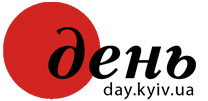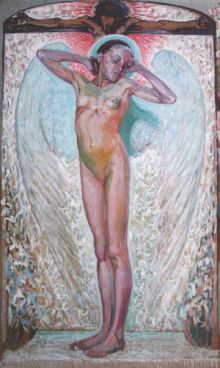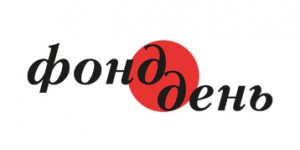An art album with the works of the well-known Ukrainian artist Oleksa Novakivsky recently came out in Lviv to mark the 140th anniversary of the artist’s birth and the centenary of The Day Metropolitan Andrei Sheptytsky took the master under his patronage. It will be recalled that, on the eve of Novakivsky’s anniversary, The Day published art expert Liubov Voloshyn’s in-depth article on the artist’s life and oeuvre (No. 19, March 27, 2012).
“The album includes Novakivsky’s best works that deserve to be called masterpieces. Unfortunately, the figure of this artist was diminished in every possible way in the Soviet era, and only a tiny fraction of his works was generally known and reproduced. The point is that almost all of the artist’s works are clearly pro-Ukrainian allegories and allusions,” says the album compiler Ostap Lozynsky. “Naturally, it was impossible to completely hush up his oeuvre because I would say he was a legendary figure in Ukrainian culture, especially in the 1930s.”
The album Oleksa Novakivsky’s Universe was published in Ukrainian and English languages and consists of two parts which present the artist’s paintings and graphics, respectively. It took about four years to collect materials for the album. Actually, the album owes its publication to the Institute for Collecting Ukrainian Art Monuments of the Shevchenko Scientific Society and the Lviv-based Andrei Sheptytsky National Museum which exercised patronage over the preparation of the album. The book was published at the Book Master print shop.
According to the editors, museums keep just a small part of the artist’s heritage – these works account for about 20 percent of those presented in the publication. They include, among other things, the canvases displayed at the Kyiv and Lviv art museums. The rest of Novakivsky’s works remain scattered among private collections.
It was not easy to gather reproductions for the album, for the artist’s works have been spread out all over the world. Novakivsky’s canvases can now be found in the US, the UK, Italy, Slovakia, etc. Very many works remained behind in Poland, where the artist lived, studied and worked for a long time. These works “surface” from time to time at Polish art auctions. Luckily, pictures are gradually coming back to the author’s fatherland and become accessible to art researchers and appraisers. For example, several paintings by Novakivsky were recently bought out of a Polish private collection and brought to Ukraine. Yet researchers note that, in his lifetime, the artist was taking a jealous attitude to and extremely rarely selling his pictures. But the ones that were still sold usually ended up in the private collections of Galician intellectuals. Later, many of those people had to emigrate from Ukraine, taking Novakivsky’s pictures with them.
As the album was being prepared, every canvas was numbered and “adapted” for printing. Owing to this technical difficulty, the publication includes no works from American collections. Some of the photo materials that came from abroad could not be included in the album due to a poor-quality image.
Moreover, some of the works shown in the album “are no longer living.” This happened, for example, to My Muse, the portrait of the artist’s wife. This canvas disappeared in the 1940s together with the artist’s other works on the way to a Moscow exhibition. Yet the compilers managed to find a color photograph of the picture. It took a week to handle the picture, and it was finally adapted for the publication.
The album publishers say that Novakivsky’s heritage has been quite well studied. Yet most of the publications on the artist’s life and oeuvre are an art research nature. These studies make an in-depth analysis of some aspects of his heritage, but they are too difficult to follow and are not intended for “grassroots readers.”
“We tried to make an easy-to-grasp popularizing publication and, for this reason, we did not dwell on art research characteristics, but confined ourselves to the artist’s life story,” Lozynsky says. “The same applies to the book’s design – we tried not to overload it with design complexities and make it as simple, restrained and laconic as possible.”
For, according to Lozynsky, the Ukrainians need to know Novakivsky’s works as much as possible, but there still is a shortage of the required promotion, exhibits, and presentation publications.
The album Oleksa Novakivsky’s Universe is in fact supposed to bridge this gap.
As the publishers revealed, they are not going to confine themselves to one book only. They say they have gathered very much information which may lay the groundwork for the future publications on Novakivsky’s heritage. In particular, plans for the future include publishing a complete collection of the artist’s works to mark his 150th birth anniversary.
It will be recalled that the artist was born on March 14, 1872, in the Vinnytsia region. He received an education at the Krakow School of Fine Arts (the class of Prof. Jozef Unierziski) and continued studies with Prof. Leon Wyczolkowski.
Novakivsky’s works repeatedly won prizes and were often exhibited. In 1911 Krakow’s Palace of Arts hosted his first solo exhibit, where the author displayed 105 fine-art works. The artist returned to Ukraine in 1913 at the invitation of Sheptytsky and settled in Lviv.








